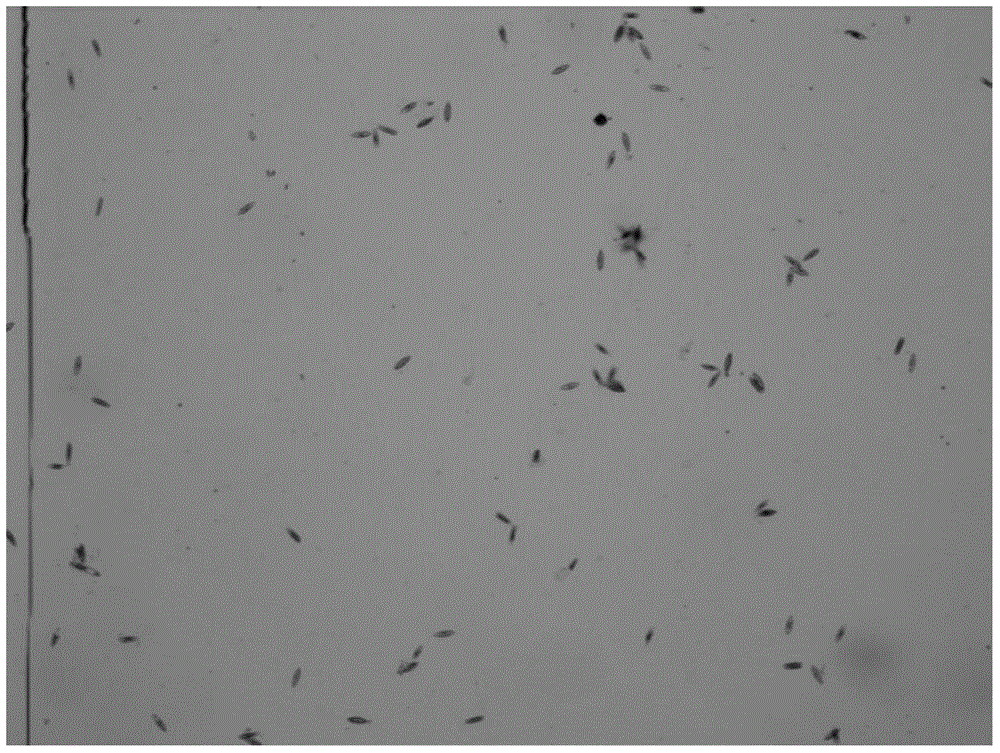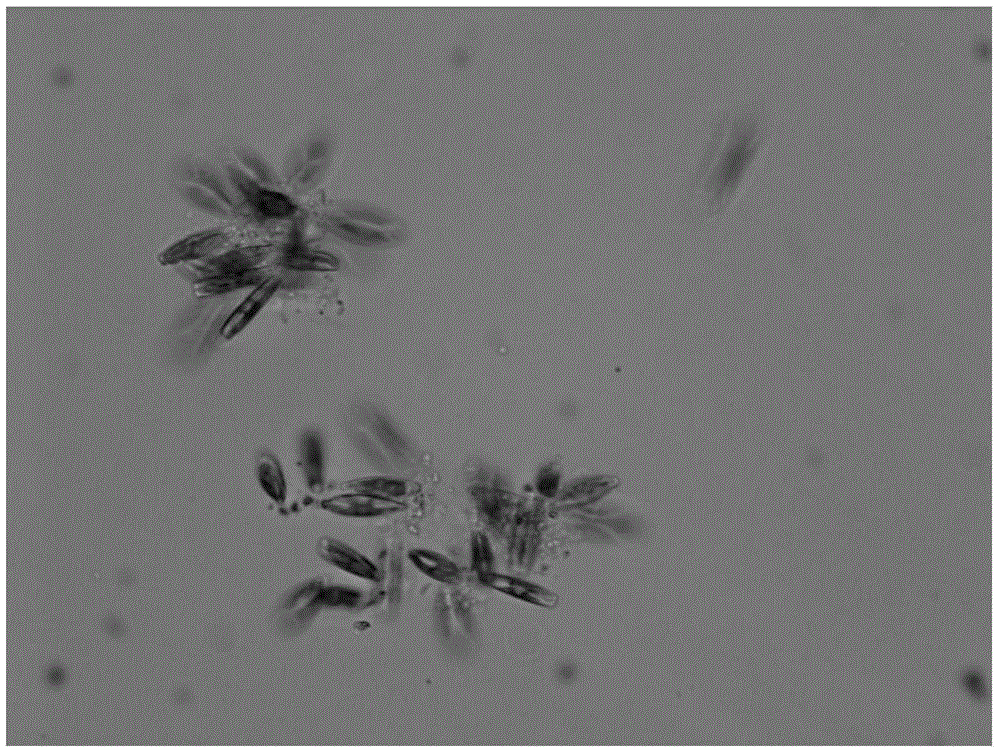Method for culturing high-density fresh water attached diatom
A high-density, diatom-based technology, applied in the field of phytoplankton cultivation, can solve problems such as the lack of freshwater diatom cultivation methods, achieve good application prospects, facilitate large-scale cultivation, and have strong operability
- Summary
- Abstract
- Description
- Claims
- Application Information
AI Technical Summary
Problems solved by technology
Method used
Image
Examples
Embodiment 1
[0019] In November when the temperature is low, tap water is obtained and placed in a glass tank of 60cm×35cm×45cm, and commercially available crude protein is added to the feed rot liquid of 30% freshwater fish floating compound feed. The total nitrogen concentration is about 140mg / L. The compound feed has been decomposed and fermented for nearly 5 months. Since soybean meal, fish meal, fish oil, minerals, vitamins, etc. are added to the commercially available compound feed, it contains various components such as protein, vitamins, minerals, and carbohydrates. Fermentation The water color of the final feed rot liquid is dark brown, and basically no odor is emitted, and the particulate matter in the feed rot liquid is filtered with a 300-mesh screen before adding. After adding feed rotting liquid, the instantaneous concentration of total nitrogen in the water body in the glass tank was 8.2mg / L, and the volume of the water body in the glass tank was about 65L. At the same time...
Embodiment 2
[0023] In December when the temperature is low, tap water is obtained and placed in a glass tank of 60cm×35cm×45cm, and commercially available crude protein is added to the feed rot liquid of 30% freshwater fish floating compound feed. The total nitrogen concentration is about 140mg / L. The compound feed has been decomposed and fermented for nearly 6 months. Since soybean meal, fish meal, fish oil, minerals, vitamins, etc. are added to the commercially available compound feed, it contains various components such as protein, vitamins, minerals, and carbohydrates. Fermentation The water color of the final feed rot liquid is dark brown, and basically no odor is emitted, and the particulate matter in the feed rot liquid is filtered with a 300-mesh screen before adding. After adding feed rotting liquid, the instantaneous total nitrogen concentration of the water in the glass tank was 10.5mg / L, and the volume of the water in the glass tank was about 65L. At the same time, the water ...
PUM
 Login to View More
Login to View More Abstract
Description
Claims
Application Information
 Login to View More
Login to View More - R&D
- Intellectual Property
- Life Sciences
- Materials
- Tech Scout
- Unparalleled Data Quality
- Higher Quality Content
- 60% Fewer Hallucinations
Browse by: Latest US Patents, China's latest patents, Technical Efficacy Thesaurus, Application Domain, Technology Topic, Popular Technical Reports.
© 2025 PatSnap. All rights reserved.Legal|Privacy policy|Modern Slavery Act Transparency Statement|Sitemap|About US| Contact US: help@patsnap.com


